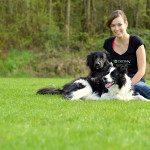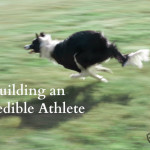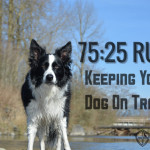Oh … Balls!
Any breed with prey drive has the chance of being addicted to chasing things, mainly because it satisfies that instinctual behaviour they were bred for, CHASE!
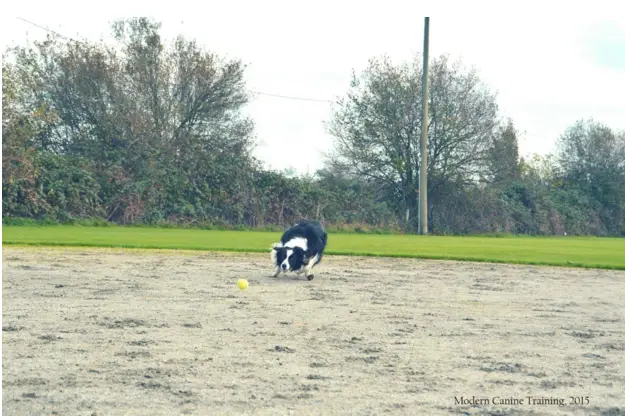
Almost every single dog owner out there has tried (succeeded or failed) with teaching their dog to fetch a ball, Frisbee or other object, strictly for the reason that “it is easy exercise for the owner and tires out your dog … fast”.
Your Dog Either Loves It, or Not-so-much
Let’s go over instincts. Instincts are within every herding breed. They need the prey drive in order to move the prey or herd them, and without this crucial instinct, the herding dog would not be a herding dog. The instinct can be very strong in some herding breeds and not so strong in others. It can be strong within 2-3 pups in a litter or within every single pup in that litter. I’ve met Border Collies that have no interest in chasing or herding; it’s like the instinct skipped that dog completely. This is why shepherds and/or breeders will often test their puppies’ instincts at a very young age (usually between 3-6 months old, some even younger) to see how they did with breeding, especially if they have working lines and choose to keep their lines working. This instinct is crucial for the puppies to be sold, as most herding breeds are still being purchased to work on farms. These farmers need a dog that can work, and in order for that dog to work, the dog has to have a strong prey drive. It all makes sense right?
Now let’s say we don’t have a farm, I certainly don’t, but I really wanted a Border Collie, and because I can’t drive two hours away every day for my dog to herd, my dog needs an activity that can satisfy that instinctual need in-between. So, I introduced a ball at a very young age and encouraged fetching to keep myself and my dog sane.
Balls Gone Wrong
Chasing a ball can be an amazing activity for you and your dog, but it can have drawbacks as well, such as:
Addiction/OCD – this is where the dog becomes overly obsessed with the activity or just the object itself, mainly because it’s been overly rewarded in the dog’s mind. There are some dogs that are also just wired a little differently, such as neurological issues that can cause obsessive compulsive disorders, rather than learning it.
Dogs that are brought out only to play ball, then leashed up and put inside again, can easily become addicted to ball-throwing, mainly because it’s their only outlet for physical and psychological activity. I know many Flyball dogs (a sport where a team of dogs and handlers let their dog loose to jump over hurdles to a ball that is released when the dog hits the wall, then runs back, then the next dog is released – kind of like a relay team). Some Flyball competitors will keep their dog locked away days before a Flyball competition to amp up the drive of the dog, and during training, their only outside time is ball chasing, because they want a dog that is BALL OBSESSED ... and they get it.
Over-worked Joints & Muscles– not many people realize that too much exercise can do some serious damage to your dog. Ball-throwing can also be very tough on the muscles, too, if the dog needs to turn quickly to make sure they “get” that ball. The adrenalin the dog gets from the exercise will overtake common sense for herding breeds, because herding breeds are meant to control, and since the ball is out of control, it needs to be controlled.
Injuries resulting from ball-throwing happen too often, mainly because owners neglect to properly condition their dog. Instead, they have a dog that has been laying around all day, then goes out to the park and instantly runs full speed, whipping their body around to catch a fly ball. Say ‘hello’ to many vet bills in the future.
Resource Guarding – Dogs that become overly obsessed with an activity or object can be more susceptible to guarding it from other dogs.
“It’s MY ball and if you take it, I don’t get to play….”
This can be dangerous for your dog because they are doing what they think is right and truthfully, they are. Guarding high value resources is a very natural behaviour for most species, though we humans don’t like when the dog does it because it’s embarrassing.
Over Exertion – This happens when the dog doesn’t know when to stop and the owner doesn’t either. Dogs can die from heat exhaustion on hot days when owners don’t realise that it’s too warm for that intense of an exercise. Dogs don’t sweat like we do and they’re wearing a fur coat, so things can go downhill pretty fast. The problem with this is the dog is hard wired to chase the ball, even if they don’t want to. Throw after throw the dog is overheating, but the instinct overrides the body.
Balls Doing Good
Now with all the bad talk that ball-throwing gets, there is a lot of good to this exercise as well.
Bonding – Playing a game that involves engaging your dog with you increases bonding between the two parties. The more positive experiences you have, the closer the relationship you will build.
Training – If your dog likes chasing balls, it’s a reward! You can use this incredibly amazing reward for any type of training, and as a dog trainer by profession, I can tell you this is an amazing tool for working with off-leash training. The ball can help habituate your dog into numerous environments.
Exercise – Exercise is good not only for the body but also for the mind. By exercising your dog in this way, it can help curb frustrations and increase overall health by keeping your dog physically fit, and with a healthy dog, he or she will live longer, increasing your time with them.
Therapeutic – Dogs like to chew. Chewing can be very therapeutic for them when they sit with a chewy ball and just chomp all their stress away. Not to mention, balls are harder to destroy than a stick!
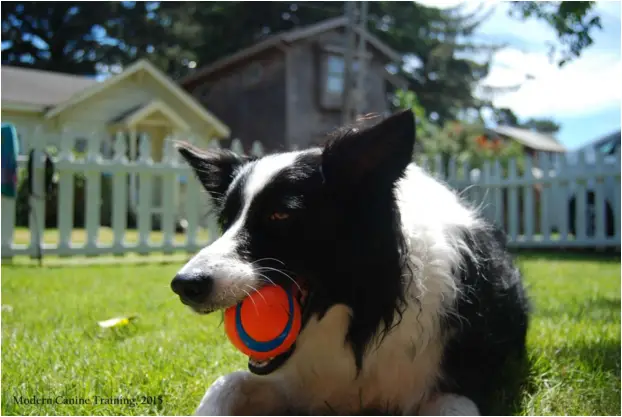
Making the Most Out Of It
There’s a few tips that I can give you to make sure your dog has a healthy appetite for playing ball.
- Don’t JUST play ball with your dog. There are so many games and activities that can wear your dog out just as fast, if not faster.
- Scent work – engage your dog’s natural scenting abilities.
- Teach cool tricks with your dog, using the ball as a reward.
- Bring a tug toy/rope with you instead and play a good game of “tug it, leave it”, this will really increase your dog’s impulse control in all areas of his or her life.
- Go for hikes and trail walks with your dog. The new scenery will engage your dog’s mind in all new ways, at each outing.
- Hide & seek with the ball. Ask your dog to stay and go place the ball in a hiding spot (make sure you remember where) and get your dog to “find it”.
- Get your dog jumping up on boulders, park benches, walking over logs. This will force them to use different parts of their body
- Condition your dog if you choose to play a lot of physically demanding sports. Here is an article on how to keep your athletic dog from getting injured.
- Have a TURN OFF cue, such as “That’ll Do” or “All Done” when you put the ball away. This is very important for herding breeds, because they really don’t know when to stop, so they will constantly think about the activity and over work themselves to the point of insanity.
All in all, playing this game with your dog can be an amazing opportunity to bond and create a magnificent creature, or if abused, this game can create a monster.
Article By:
Kris Crestejo, CDBC
Meet Our Evangelist
